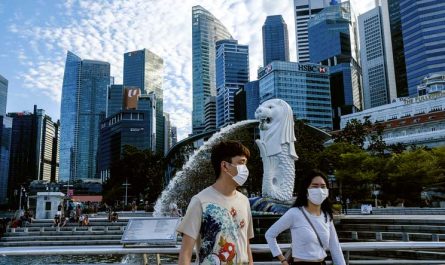The rule of ‘social distancing’ is now effective in many countries, which literally means people must keep a physical distance from each other (at least 1 meter) in social settings. This strategy is strongly recommended by scientists and it is hoped that it can prevent the rapid transmission of COVID-19. As a result, many shopping malls and retail stores have been forced to shut down. The shopping experiences that we often enjoyed will be gone for a little while. I am sure that these experiences will return when the pandemic is under control, but I can’t help but wonder – how can we still enjoy the ‘shopping experiences’ while we are physically away from each other? How does this change consumers’ behaviours, in what ways and to what extent? With these key questions in mind, the Concept M China research team conducted a series of in-depth online interviews in order to gain some insights into the situation during this critical time.

The research team interviewed coffee shop and restaurant owners from the central district of Beijing, as well as a group of customers from different age groups. The study aimed to understand how COVID-19 influences consumer behaviours from both B2B and B2C perspectives.
According to Mr. Liu, one of the coffee shop owners, customers are ‘in and out of the coffee shop within a couple of minutes, very few people choose to dine in even though it is very safe to do so’. The customers are slowly returning but most of them choose to order take-away food/coffee instead. The time spent in cafes has reduced dramatically. Even though the pandemic situation in China is now well under control, people are still extremely cautious during this recovery period. This type of customer experience, as Mr. Liu stated, has become the new norm in urban cities, at least for the time being. Customer interactions have become more goal oriented; their sole intention is to get a cup of coffee and hence, little conversation is exchanged between staff and customers. In a way, the whole experience has become restrained and unidirectional. As a result, the opportunity for customers to explore other purchase items has become very limited because of the lack of interaction within the shop.
How do consumers balance their consumption needs?
With this question in mind, we further discovered that innovative e-commerce, social media and mobile technologies have created new and exciting opportunities in the retail market. Especially during this period of social distancing, China’s e-commerce market has accelerated as digital innovation continues to transform the retail shopping experience. It has integrated shopping experience with user-friendly mobile apps and payment technologies to create unique shopping ecosystems.
Hema (盒马) enables consumers to shop online via the mobile app, have food delivered free of charge or cooked/prepared for pickup within 30 minutes, and pay using Alipay or WeChat Pay. There is a strong focus on freshness and safety, as well as an expansive live seafood section where consumers can select their seafood, and have it cooked on the spot. This unique experience, combined with fast delivery at no extra cost, is driving Chinese consumers to adopt this digital shopping revolution and virtual experience. It is also interesting to note that adoption of this online grocery shopping culture is especially strong in China compared to the rest of the world. In a way, it is reinforcing consumer’s sense of autonomy and self-management. These emotional needs have become much stronger during this COVID-19 epidemic and their needs of shopping experiences are also fulfilled without the risk of potential virus transmission.
Chinese consumers are also discovering more brands and unique products through social media and online influencers. Web search traffic on the traditional internet search engines is already declining in China as Chinese consumers are moving to social media and e-commerce platforms instead. Online social interaction and content have become an important part of a consumer’s purchasing process. One example is Xiaohongshu (小红书 – translated as ‘Little Red Book’ in English), a social media and e-commerce platform that allows consumers to discover and purchase new fashion and beauty products, as well as share reviews and photos. It currently has over 300 million registered users and growing. Xiaohongshu also allows users and influencers to post blogs and short videos, which provides consumers with a sense of personal engagement and can help spread endorsements of brands or products. Chinese consumers, especially millennials, are more open to suggestions from influencers, so are more likely to purchase products endorsed by celebrities and influencers.

Live-streaming content is also fast becoming the biggest thing in the Chinese retail industry during the time of self-isolation and social distancing. An example is Alibaba’s popular e-commerce live-streaming platforms, such as Taobao Live and Tmall Live, which integrates video, live-streaming, and social media capabilities into its user interface. This provides Chinese consumers with real-time interaction and engagement. They can conduct real time Q&A with influencers online and receive immediate responses, which gives them a sense of a “real” interaction as well as a feeling that their needs are fulfilled. There are also special promotions that are only available on live streaming, which further enhances the aspects of fun and games. This is very attractive to young millennials. Recently, Kim Kardashian announced her fragrance brand KKW on Tmall Live. It was viewed by over 13million people and her product was sold out in minutes.
In summary, even though offline shopping experiences may be gone for a while due to safety reasons, it is important to know that Chinese consumers are very interactive by heart. Being involved in the shopping experience is essential and they will always find a way to be involved with the community. Where there is a will, there is a way.










 by
by 


